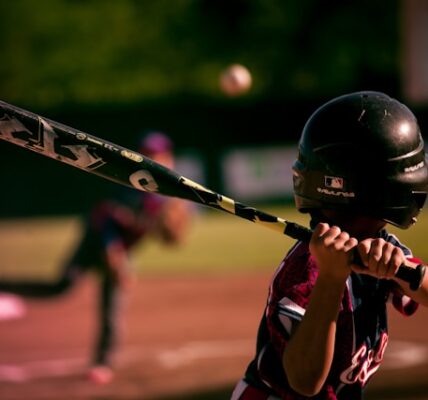Baseball is a sport steeped in tradition and statistics, with each play and player contributing to the rich tapestry of the game’s history. Among the many statistics that define a player’s performance and a team’s success, one that often comes into play during a game is the “Ground Into Double Play” or GIDP. This seemingly straightforward term, which has been a part of baseball for over a century, holds a significant impact on the outcome of a game and a player’s reputation. In this article, we will delve into the world of baseball statistics and explore what exactly “Ground Into Double Play” means, how it is calculated, and why it is a crucial metric in evaluating a player’s contribution on the field. Whether you’re a die-hard baseball fan or just looking to expand your knowledge of the game, understanding GIDP is essential to appreciating the nuances of America’s pastime.
Understanding Ground Into Double Play (GIDP) in Baseball
Ground Into Double Play (GIDP) is a crucial statistic in the world of baseball, offering valuable insights into a hitter’s ability to avoid hitting into a double play. In baseball, a double play unfolds when the defensive team swiftly records two outs in a single play, primarily initiated by a ground ball hit by the batter. When a batter’s hit leads to this remarkable defensive maneuver, it is officially recorded as a GIDP.
How GIDP Occurs
GIDP can occur in various scenarios, with each presenting a unique challenge for the hitter and an opportunity for the defense. Let’s delve deeper into the circumstances in which GIDP can take place:
- Runners on Base: GIDP frequently comes into play when there are baserunners, especially on first and second base. Here’s how it unfolds:
- The batter hits a ground ball towards the infield;
- The fielding team quickly retrieves the ball and aims to turn the double play;
- The fielder throws the ball to the second baseman, who touches second base to force out the runner advancing from first;
- Subsequently, the second baseman makes a precise throw to the first baseman, completing the double play by tagging out the batter-runner.
- Ground Ball Hitting: GIDP primarily results from a ground ball hit by the batter. Ground balls are balls that make contact with the ground before being fielded, making them susceptible to quick defensive maneuvers;
- Pitcher’s Influence: The type of pitch and the pitch location can also impact the likelihood of GIDP. Sinkers and changeups, which tend to induce ground balls, can increase the chances of a GIDP.
Strategies to Avoid GIDP
Hitters aim to minimize their GIDP statistics by employing certain strategies and techniques. Here are some valuable tips to avoid becoming a victim of GIDP:
- Selectively Swing: Hitters can be more selective in their swings, avoiding pitches that are likely to result in ground balls. They can focus on pitches they can drive into the outfield or elevate for a line drive;
- Improve Speed: Speed is an advantage on the basepaths. Faster runners have a better chance of beating out a potential double play by reaching first base before the throw;
- Hitting to Opposite Field: Hitting the ball to the opposite field (for a right-handed batter, to right field, and vice versa) can reduce the chances of hitting into a double play since the fielders have to cover more ground to make the play;
- Pitch Awareness: Batters can improve their GIDP avoidance by recognizing pitch types and locations that often lead to ground balls. This awareness can help them adjust their swing accordingly;
- Situational Awareness: Being aware of the game situation is crucial. In some cases, sacrificing personal statistics for the benefit of advancing baserunners or scoring runs may be the best decision.
Mastering the Double Play: The Art and Strategy of Baseball’s Game-Changing Maneuver
The execution of a double play in baseball is a masterful display of teamwork and strategy. This defensive maneuver is critical in situations such as when a player is on first base and the hitter sends a ground ball towards the middle infielders. The essence of the double play lies in its precision and timing, turning what could be a simple out into a game-changing moment. Here’s a deeper look into the components that make a double play both effective and exhilarating:
Key Positions and Responsibilities
- Shortstop and Second Baseman: These players are the linchpins of the double play. They must be agile and quick-thinking, often making split-second decisions. When a ground ball is hit, one of these players must field it and then swiftly throw it to their partner covering second base;
- First Baseman: This player’s role is crucial in securing the second out. They must be prepared to receive a rapid and sometimes off-target throw from second base, often stretching or leaping while keeping a foot on the base;
- Pitcher: Often overlooked, the pitcher’s role is vital in initiating a double play. They must deliver pitches that are likely to result in ground balls, targeting specific zones that increase the chances of the ball being hit towards the middle infield.
The Art of Execution
Executing a double play is akin to a choreographed dance. It begins with the pitcher setting the stage with a well-placed pitch. As the ball is hit, the middle infielders spring into action. The player fielding the ball must do so cleanly and transfer it quickly and accurately to their teammate at second base. This player, in turn, needs to be adept at receiving the ball, swiftly stepping on the base for the first out, and then pivoting to throw to first base. The first baseman completes the play, stretching to catch the throw and securing the second out.
Tips for Perfecting the Double Play
- Communication: Players must communicate effectively, signaling who will take the lead in fielding the ball;
- Positioning: Proper alignment is essential. Players should be positioned to optimally field a ground ball and make the necessary throws;
- Anticipation: Infielders must anticipate the ball’s trajectory and the runners’ movements to time their actions precisely;
- Practice: Regular drills and practice plays are crucial in developing the muscle memory and coordination required for a smooth double play.
Impact on the Game
A well-executed double play is not just about getting two outs. It’s a momentum shifter, capable of deflating the opposing team’s morale while energizing the defensive team. It can be particularly demoralizing for the batting team, turning a potential scoring opportunity into a swift end of an inning.
Documentation of Ground Into Double Play (GIDP)
A Ground Into Double Play (GIDP) is a pivotal moment in baseball, often shifting the dynamics of an inning. This event is meticulously documented by the official scorer, a critical yet impartial observer positioned in the press box. The scorer’s role is to chronicle all significant occurrences on the field, with a GIDP being a notable instance.
Process of Recording a GIDP
- Initial Assessment: The scorer first confirms that the batter has hit the ball along the ground. This initial step is crucial as it sets the stage for the potential double play;
- Observation of Outcomes: Subsequently, the scorer verifies that two outs were made from this single play. This is the defining characteristic of a GIDP;
- Assignment of GIDP: After confirming the above conditions, the scorer officially records the GIDP against the batter who initiated the play;
- Additional Notes: In instances where base runners are present, their retirements due to the double play are also noted by the scorer.
The Impact of Grounding into a Double Play in Baseball
When a batter hits a ground ball that leads to a double play, it results in two players being declared out in one continuous play. This event is not just a mere statistic; it has profound implications on the dynamics of a baseball game. Consider these aspects:
- Strategic Shift: A double play can dramatically alter the course of an inning. The offensive team, possibly building momentum, suddenly finds itself with two fewer opportunities to score. This shift can dampen the team’s morale and change their strategic approach;
- Defensive Advantage: For the fielding team, executing a double play is a significant achievement. It not only boosts the team’s confidence but also reduces the offensive threat by removing runners from base;
- Game Pace: Double plays can quicken the pace of a game. By eliminating two outs in one play, innings can conclude more rapidly, affecting the overall length of the game.
Hank Aaron’s Record in Grounding into Double Plays
Hank Aaron, an iconic figure in Major League Baseball (MLB) and a member of the Hall of Fame, holds the record for the most grounded into double plays (GIDP) in MLB history, with a total of 328. This record is a small footnote in the career of a legendary hitter known for his remarkable achievements. Here’s a broader perspective:
- Career Overview: Aaron’s career was marked by exceptional hitting prowess, making him one of the greatest to ever play the game. His achievements far overshadow his record in GIDPs;
- Balancing Act: Aaron’s high GIDP count reflects the challenge hitters face in balancing power and precision. Despite his ability to hit powerfully, he sometimes hit ground balls that led to double plays;
- Historical Context: This record also speaks to Aaron’s era of play, where certain aspects of the game, like pitching techniques and field strategies, influenced the likelihood of hitting into double plays.
Comprehensive Overview of Ground Into Double Play (GIDP) in Baseball
Ground Into Double Play (GIDP) is an essential statistic in baseball, representing a defensive play where two outs are recorded in one continuous play. This metric has been a part of baseball analytics for over a hundred years, offering insights into both the batter’s and the defensive team’s performance.
Historical Significance:
- Pioneers in GIDP: The tracking of GIDP has provided a window into the playing styles and strategic approaches of numerous baseball legends;
- Evolution of the Statistic: Over the years, GIDP has evolved, reflecting changes in playing strategies, pitching styles, and the overall pace of the game.
Legendary Figures in GIDP:
- Hank Aaron: Renowned for his remarkable career, Aaron holds a historic record in GIDPs, having grounded into 328 double plays. This figure not only showcases his frequent contact with the ball but also highlights his era’s strategic playstyles;
- Albert Pujols: With an impressive 409 GIDPs, Pujols demonstrates not just his long-standing career but also his consistency and resilience as a hitter. His ranking in GIDP is a testament to his enduring presence in the sport;
- Eddie Murray: A former Detroit Tigers first baseman and a five-time All-Star, Murray has a notable record of 350 GIDPs. His achievements in this statistic underscore his significant role in baseball during his active years.
Impactful GIDPs in Baseball History
Throughout the storied history of baseball, there have been several moments when Grounded Into Double Plays (GIDPs) have left an indelible mark on the outcome of games and, in some cases, entire seasons. These instances serve as a testament to the high-stakes drama that unfolds on the diamond. Let’s delve into two remarkable examples that have etched their place in the annals of the sport:
1926 World Series Triple Play Drama: Chick Hafey’s Fateful Swing
In the crucible of Game 7 of the 1926 World Series, the baseball world witnessed an extraordinary turn of events that would reverberate through time. Cardinals’ outfielder Chick Hafey stepped up to the plate with the bases loaded, poised to rewrite history. However, fate had other plans. With one ill-fated swing, Hafey grounded into a triple play, a rarity in baseball. This astonishing play essentially sealed the Cardinals’ fate, crushing their chances of winning not only the game but also the coveted championship title. The dramatic triple play remains a testament to the unpredictability and intensity of baseball’s grandest stage.
2018 ALCS Turning Point: Jose Altuve’s GIDP
The 2018 American League Championship Series saw another GIDP moment etching itself into the baseball lore. In Game 4, tensions ran high as the Houston Astros faced off against the Boston Red Sox. With the bases loaded and a pivotal moment in the series at hand, Astros’ infielder Jose Altuve found himself in the batter’s box. A ground ball turned into a game-ending double play that not only shifted the momentum but also allowed the Red Sox to take a commanding 3-1 lead in the series. Ultimately, they clinched the championship, underscoring how a single GIDP can profoundly influence the destiny of a team.
Evolution of GIDPs in Baseball
As baseball has evolved over the years, so too has the prevalence and impact of GIDPs. The dynamics of the game have changed, with advanced defensive strategies and rule adjustments shaping the GIDP landscape. Let’s take a journey through the history of GIDPs and understand how they have evolved:

Early Baseball Era: Fewer GIDP Opportunities
In the nascent years of baseball, the game was markedly different. There were fewer opportunities for batters to hit into double plays due to various factors, including less specialized fielding positions and defensive strategies. This era was characterized by a simpler, less structured style of play that led to fewer GIDPs.
Modern Baseball: The Impact of Advanced Defensive Strategies
In stark contrast, modern baseball has witnessed a surge in defensive strategies and fielding specialization. Teams employ intricate shift patterns, positioning infielders strategically to maximize the likelihood of turning double plays. Pitchers have developed a keen sense of inducing ground balls, knowing the potential for GIDPs. This evolution has made it challenging for batters to hit into double plays at a high rate.
The Unbreakable Record: Jim Rice’s 1984 Season
The pinnacle of GIDP achievement stands with Jim Rice, who hit into an astonishing 36 double plays during the 1984 season. This record has endured for nearly four decades, a testament to the increasing difficulty of achieving such a feat in the modern era. With the ever-advancing defensive strategies and the emphasis on launch angle hitting, it is improbable that this record will be broken any time soon.
Conclusion
In baseball, the Ground Into Double Play (GIDP) emerges as a crucial indicator, reflecting a hitter’s skill in evading counterproductive outs that can impede a team’s scoring effectiveness. Understanding the nuances of GIDP is essential for all who cherish baseball, be they coaches, players, or dedicated fans. By focusing attentively on this statistical measure, coaches and players can strive to enhance their team’s offensive skills while simultaneously reducing the occurrence of double plays during the game. For enthusiastic supporters, an in-depth understanding of the GIDP statistic deepens their enjoyment and appreciation of the game. It enables them to more accurately evaluate player performance and understand the impact of defensive strategies on the game’s progression.




